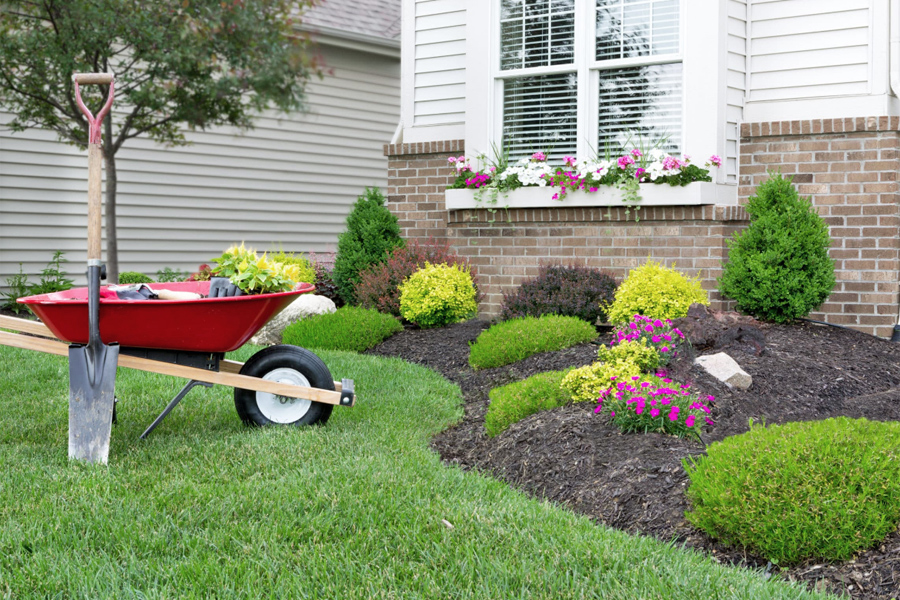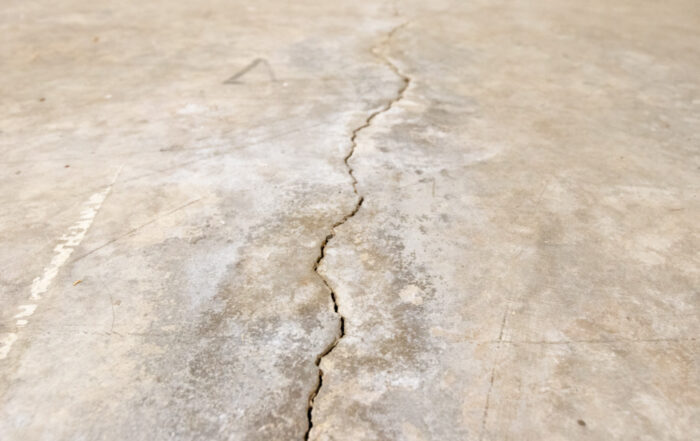Landscaping Around House Foundation: A Homeowner’s Guide

Is your yard in need of a makeover?
Or maybe you’re just ready to realize your residential landscaping dreams.
Well, whatever the designs, natural elements, or labor you’re considering for your dream yard, there are a few things you should know about your home’s foundation before you get moving on your landscaping projects.
Whether you’re looking to breathe new life into an existing landscape or to start from scratch, the wrong placement or plant selection can be disastrous to your home’s foundation.
To avoid hitting roadblocks or making costly mistakes that result in necessary home foundation repair, read along for our best advice an landscaping around your home’s foundation.
What to Consider Before You Begin Planting
Whether you will be planting trees, small shrubs, or plants of any size, make sure you understand your property landscape before you begin making any plans or purchases.
One of the most important factors you’ll need to take into consideration for your residential landscaping is the current slope around the foundation of your home. If water naturally flows toward your home’s foundation rather than away from it, you’re likely dealing with “negative drainage.” You need to address this drainage issue when you look at possible landscaping and your foundation. The process of leveling your soil to ensure adequate drainage is referred to as “grading.”
Grading Your Soil
Luckily, taking care of this on your own isn’t difficult. If you already have shrubs, bushes, or other landscaping around the part of your home where you’re having the negative-drainage issue, you’ll need to dig out those plants and scoop out the surrounding grass. Then, fill the natural area with more soil in order to raise the grade.
The process of grading your soil doesn’t require a lot of expertise or specialized skill, but you’ll want to do your research or speak with a gardening or landscaping expert. Experts recommend a slope of between 3% to 5% within 10 feet of your home’s foundation.
Placement and Purpose
You’ll also need to think about where you’d like to place your plants and what purpose you’d like them to serve beyond aesthetics. For example, many people like to create “foundation plantings” around the perimeter of their homes to serve as an aesthetic transition between their lawn and their home. When it comes to trees, you may be looking for something that will cast enough of a shadow to help cool a certain room in your house or to block the harsh sun.
Understanding the purpose you want your landscaping to serve will help you get a better idea of the precautionary measures you need to take before planting.
Tips for Healthy, Successful Foundation Plantings
Whether your foundation is raised or flat, you can create a beautiful foundation planting that can give your lawn a major makeover and protect your foundation in the process.
Healthy mix: Experts recommend opting for a mix of plants of various sizes, ranging from garden beds, small bulbs, or even small trees.
Grass and low covers: A foundation planting may also help you control the amount of soil erosion that takes place around the perimeter of your home. Grass and low-to-the-ground covers can help keep your soil in place and protect it from extensive erosion in the event of heavy rains.
Create space: While well-graded soil can help prevent your foundation from getting water damage, you must be careful not to plant anything too close to your foundation. Leave at least three feet of space between your foundation and plants or you’ll run the risk of watering your foundation every time you give your plants a drink, which can lead to mold, termites and costly damage.
How to Choose Foundation-Safe Shrubs and Trees
When deciding which foliage to plant around your home, your first consideration should be the placement of your plants and how their root systems could potentially affect your home’s foundation. You should also consider how quickly your plants will grow, how much water they’ll need, and whether they will thrive in your city’s specific climate and geographical landscape.
Considerations for Shrubs and Bushes
First, consider the mature height and width of the shrubs. This mature size will be the deciding factor when it comes to knowing where to plant these shrubs.
Typically, a medium-height shrub should always be planted at least three feet away from the foundation of your home, and a large shrub at least five feet away. However, this distance is also dependent on the width of the shrub. If your shrub grows up to 15 feet wide, you’ll need to plant it at least 7 to 8 feet away from the foundation of your home.
Keep in mind that a shrub shouldn’t be any taller than the eaves of your roof because falling leaves could clog your drainage systems.
When it comes to choosing shrubs that will thrive in your Texas soil, look for native foliage. You should also refer to your city’s USDA Plant Hardiness Zone. Various plants can behave in different ways depending on their soil, so it’s important to know your city’s zone. Many major cities in Texas – such as Austin, San Antonio, and Houston – lie within Zone 8. Examples of flowering and non-flowering shrubs that are well-suited for Zone 8 soil include:
- Oakleaf hydrangea
- Mountain laurel
- Camellia
- Abelia
- Arborvitae
- Lilac
Considerations for Trees
When it comes to planting trees around your yard, there are two primary factors you need to take into consideration: growth rate and root systems. Avoid fast-growing trees and those with extensive root systems, as these factors can pose a major risk to the strength and health of your foundation. A tree’s root system often extends much longer than its canopy, so you’ll need to take your time and do plenty of research before planting.
Oaks, poplars, sycamores, and ash trees are some of the biggest threats to a home’s foundation, as they grow rapidly and have extensive root systems that can easily reach your foundation even when planted several feet away from your home.
As with shrubs, knowing your city’s plant hardiness zone will help you decide which trees will fare well in your climate and geographical landscape. Trees that flourish in many major Texas cities include:
- Hemlocks
- Ironwoods
- Beech trees
- Dogwoods
Ensuring Proper Drainage Systems
No matter what types of greenery you end up planting or how much of your yard it takes up, your foundation will never be fully protected without the proper drainage systems in place.
There are various types of drainage systems that can be implemented around your home, and you’ll want to consult a qualified foundation repair company to ensure you have the proper drains installed based on the size, layout, and condition of your yard and overall landscape.
Here are some of the most common foundation drainage systems:
- Surface drains: These collect surface water that pools in low spots.
- Channel drains: These drains collect water on hard surfaces (such as driveways or sidewalks).
- French drains: These drains catch subsurface water before it reaches your foundation.
Landscaping Around House Foundation
If you haven’t inspected your home’s foundation recently, you could be facing serious foundation issues without even knowing it. These tips also apply to commercial properties, but are key considerations to keep your residential landscaping project problem-free.
Schedule a free foundation inspection so you can get started planning the yard of your dreams. Our experts are here to help ensure your residential or commercial foundation is protected.



